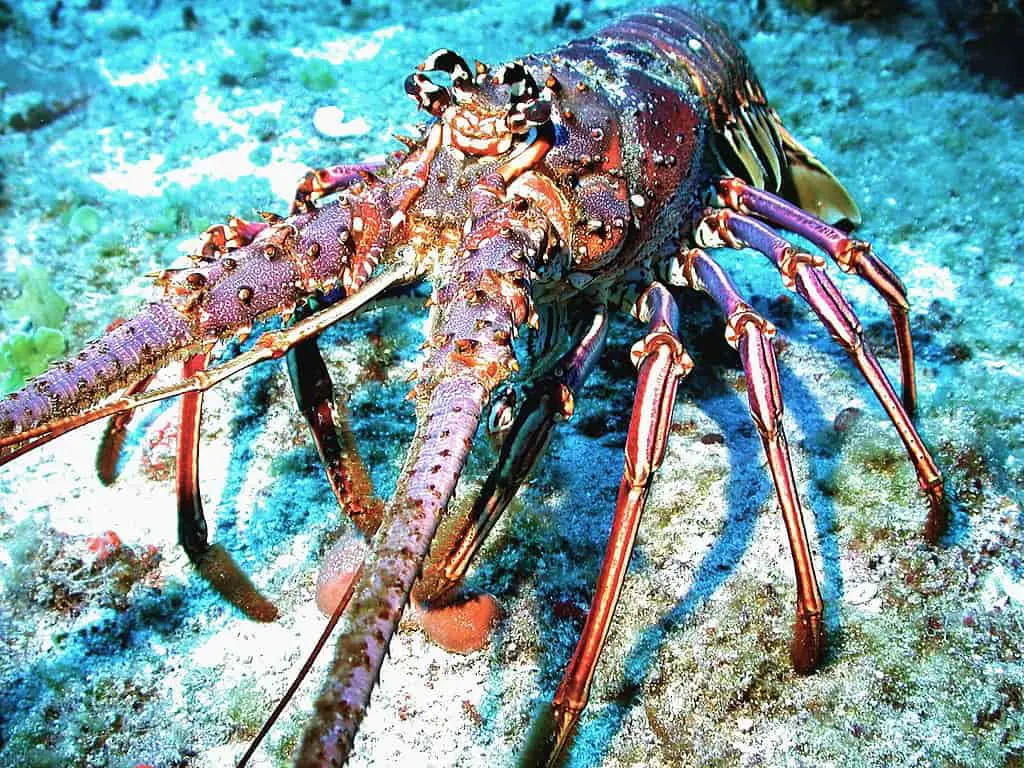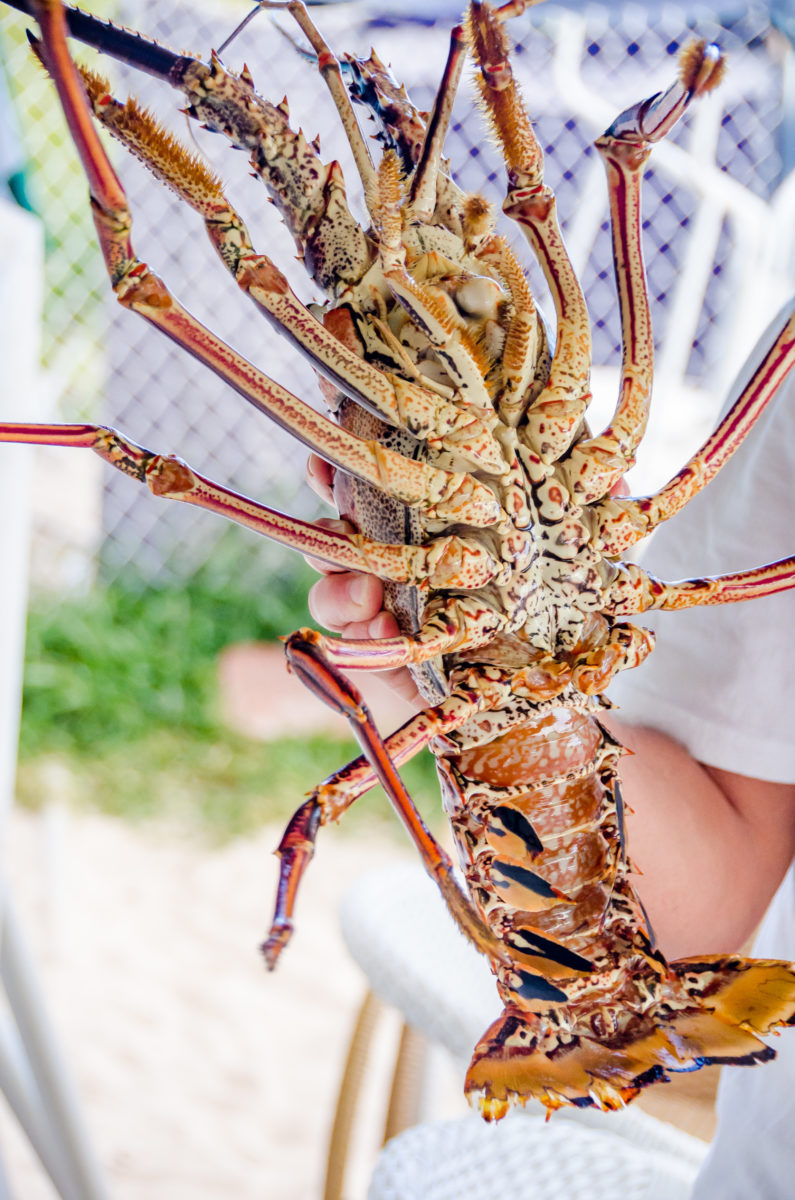It would be too easy to be drawn into the debate about what’s the tastiest lobster. Of course, most people from the northern half of the US would quickly respond (in all caps): MAINE LOBSTER! They would probably also say that it’s the only “true” lobster, whatever that means. Also, it goes without saying that almost everyone from the West Indies would shout back, “CARIBBEAN SPINY LOBSTER IS ‘DE BEST!”
Lobsters are iconic sea creatures, instantly recognizable by their large front claws. However, not all lobster species actually possess these distinctive claws. There are several types of clawless lobsters, which can be a surprise to those expecting all lobsters to have pinchers. In this article, we’ll take a close look at the lobsters that break the claw “rule” and explain why they evolved without these appendages.
An Overview of Lobster Diversity
To understand clawless lobsters, it helps to first understand the diversity within the lobster order (Nephropida). There are numerous lobster species divided into several families:
- Nephropidae – The “true” lobsters, including the American lobster. All have claws.
- Palinuridae – The spiny lobsters, which lack claws.
- Scyllaridae – The slipper lobsters, which also lack claws.
- Synaxidae – The furry or coral lobsters, clawless.
So while the archetypal lobster has formidable claws, nearly half of lobster species do not. The clawless varieties represent an interesting evolutionary adaptation.
Spiny Lobsters – Defense without Pincers
The spiny lobsters (family Palinuridae) are widespread in warm oceans worldwide. There are around 60 species, including the California spiny lobster and the painted spiny lobster. As their name suggests, spiny lobsters lack claws but have numerous spines covering their bodies. These spines are very sharp and can inflict painful stings, serving as an effective deterrent against predators.
Spiny lobsters have other adaptations to make up for their lack of claws:
- Long, whip-like antennae to sense their surroundings.
- A flexible tail that can propel them rapidly backward to escape danger.
- Two large horns over their eyes.
- Small grooming claws on the fifth pair of legs, used by females to clean their eggs.
The spines, speedy retreats, camouflage, and other defenses allow spiny lobsters to survive effectively without claws for fighting or grasping prey.
Slipper Lobsters – Flattened and Camouflaged
The approximately 90 species of slipper lobsters (family Scyllaridae) inhabit warm waters around the world. They lack claws and have a dorsoventrally flattened body shape. Their common names refer to their flattened clawless legs which resemble slippers.
Slipper lobsters have several unique adaptations
- A flattened carapace that hides them on the seafloor.
- Short, broad antennae.
- Camouflaging coloration to avoid detection.
- Powerful tail for swimming rapidly away from threats.
Their excellent hiding abilities and speed make claws unnecessary. Some slipper lobsters have small grooming claws like spiny lobsters. Overall, their anatomy allows them to evade predators without needing to fight them off with pinchers.
Furry or Coral Lobsters – Rare and Hairy
The furry or coral lobsters (family Synaxidae) are the least known of the clawless lobsters, They live in warm coral reef environments and have fuzzy bodies covered in setae (hairs), Only around 11 species have been identified,
Due to their cryptic habits and rareness, little is known about their evolutionary history or anatomical adaptations. However, they clearly follow the same clawless trend as other warm water lobsters. Their habitat offers places to hide, reducing the need for claws.
Evolutionary Drivers Behind Losing the Claws
While clawed lobsters dominate in cold northern waters, around the world’s tropics clawless varieties take over. This distribution suggests an evolutionary adaptation to water temperature.
Several hypotheses help explain why tropical lobsters may have lost their claws over time:
- Claws are less efficient for catching warm water prey like fish and mollusks.
- Claws require a lot of energy to grow and maintain, a metabolic cost unneeded in warm waters with plentiful food.
- Claws are useful for fighting off predators, which are rarer in tropical reef environments.
- Loss of claws forced the evolution of alternative defenses like spines, speed, and camouflage.
So while claws provide an advantage in colder, prey-poor environments, tropical waters seem to favor clawless lobsters due to reduced energy costs and predation risk. This diversity highlights how ecosystems can shape the evolution of anatomical adaptations over millennia.
Identifying Clawless Lobster Species
When diving, snorkeling, or ordering seafood in tropical locales, keep an eye out for these fascinating clawless creatures. Some identification tips:
- Spiny lobsters have spiny bodies and long antennae, often with striking stripes.
- Slipper lobsters are oblong in shape and mimic rocks or coral on the seafloor.
- Furry lobsters have velvety setae covering their bodies.
- All have ten legs and lobster-like tails.
Don’t be fooled by their lack of claws – these lobsters have evolved for life just fine without them! Understanding claw diversity teaches an important lesson about resisting stereotypes. Just as armored knights no longer define human warfare not all lobsters need claws to survive and thrive in their watery realm. Appreciating this variety highlights nature’s endless capacity for generating new forms and functions.

Caribbean Spiny Lobster vs Maine Lobster
Instead of adding fuel to the Caribbean spiny lobster (Panulirus argus) vs. Maine lobster (Homarus americanus) debate (I think you know which side I’m on), I’ll just say that there are two other factors that make a dish tasty that aren’t related to the debate.
First, there is freshness. Second, there is a more vague “spice” that could be authenticity, nostalgia, or even an experiential quality. Basically, everything tastes better when it’s both fresh and an experience.
That’s not true. Our lobster, which is also called a Caribbean spiny lobster and lives in the warm Atlantic Ocean, Caribbean Sea, and Golf of Mexico, is not related to the Maine lobster that lives in cold water. No, spiny lobster doesn’t have oversized front claws full of tasty flesh. No, spiny lobster isn’t what many Americans grew up with from visits to the likes of Red Lobster.

What is spiny lobster?
While spiny lobster isn’t exactly a traditional West Indian dish, it is one of the freshest (it was still alive when I got there) and most authentic meals you can have there. Because of this, spiny lobster without claws is the world’s tastiest lobster… at least while you’re eating it.
Caribbean Lobsters Do Not Have Claws Why
Do spiny lobsters have claws?
These lobsters mainly prefer warmer waters so can find them while scuba diving or snorkeling in tropical destinations. There are about 60 species of spiny lobsters, such as common Panulirus argus, California spiny lobster, or Panulirus versicolor. Spiny lobsters (or rock lobsters) don’t carry claws.
What is a clawed lobster?
Clawed lobsters are characterized by a pair of claws in the front and four pairs of appendages. Their second and third pair of legs are actually also claws but much smaller and are used for helping to rip the food apart and walking. The fourth and fifth pair are used for walking only.
How many claws does a lobster have?
Clawed Lobsters have five pairs of legs used for walking and 3 pairs of claws. At first glance, you would notice only two claws to the front as these are always the largest pair. Both the American lobster and European lobster are clawed lobster and it is the species that you’d be served in a restaurant. European Lobster.
Do reef lobsters have claws?
Reef lobsters also have claws but they are not classified as clawed lobster. These kinds of lobsters only have claws on the first pair of limbs and not on any others. Reef Lobster. Fun Fact: All Reef Lobsters are very territorial and aggressive towards each other, so only one specimen or a mated pair should be kept per tank.
